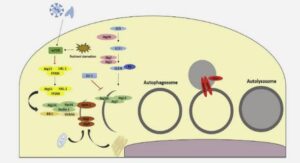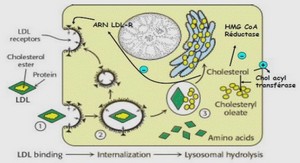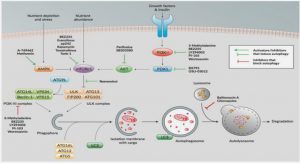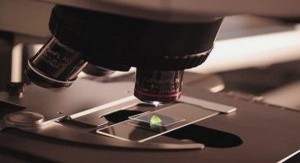Prediction of soil water retention properties after stratification by combining texture, bulk density and the type of horizon
Parmi les nombreuses fonctions de pédotransfert (PTF) précédemment publiées, les classes de fonctions de pédotransfert (CFPT) n’ont fait l’objet que d’un nombre très limité d’études car leurs performance sont généralement considérées comme étant très limitées. Cependant, des études récentes ont montré que les performances de classes de fonctions de pédotransfert (CFPT) peuvent être similaires à celles obtenues avec les fonctions de pédotransfert continues (FPTC) qui sont beaucoup plus connues. Dans ce chapitre, nous comparons les performances de CFPT basés sur des classes de texture et sur des classes combinant la classe de texture et de densité apparente, et après stratification en fonction du type d’horizon (horizons de surface et de subsurface) en utilisant un jeu de données de 456 horizons prélevés dans plusieurs régions de France. Les performances de CFPT ont été discutées pour deux valeurs de potentiel (-330 hPa et -15000 hPa) en utilisant un jeu de données de 197 horizons appartenant à des sols français. Nos résultats ont montré que la meilleure performance a été enregistrée avec les CFPT établies en utilisant la texture et la densité apparente (CFPT texuro-structurales). Les résultats ont aussi montré que l’analyse après stratification en fonction du type d’horizon ne montre pas d’amélioration très sensible de la prédiction. La comparaison des performances de prédiction à -330 hPa et à -15000 hPa a seulement montré une petite différence n’indiquant pas de biais en fonction du potentiel. L’utilisation de CFPT pour établir des cartes de la capacité de stockage en eau (RU) avec la base de données géographique des sols de France à 1 :1000000, a conduit à une distribution légèrement différente de la capacité de stockage en eau sur l’ensemble du territoire métropolitain. Cependant, la moyenne de la capacité de stockage calculée n’a pas différé avec les différentes CFPT utilisées.Among the numerous pedotransfer functions (PTFs) earlier published, the class-PTfs received little attention because their accuracy was often considered as limited. However, recent studies showed that performance of class-PTFs can be similar to the continuousPTFs that are much more popular. In this study, we compared the performance of PTFs that were established by using a set of 456 horizons collected in France and classes of texture and bulk density and the type of horizon (topsoil and subsoil). The performance of these class-PTFs were discussed at -330 and -15000 hPa. Our results showed that the best performance was recorded with the class-PTFs that use both texture and bulk density (texturo-structural class-PTFs). They showed also that utilization of the type of horizon did not improve the prediction performance. Comparison of the performance at -330 and -15000 hPa showed only very little difference thus indicating no bias according to the value of water potential. Use of the class-PTFs to establish maps of the available water capacity with the 1:1 000 000 Soil Geographical Database of France led to slightly different distribution of the AWC at the scale of the whole French territory. However, the averaged AWC computed did not differ with the different class-PTFs used.
Prediction of soil water retention properties after stratification by combining texture, bulk density and the type of horizon1
Pedotransfer functions (PTFs) relate the basic soil properties that are as easily accessible to the less often measured soil properties such as hydraulic properties (Bouma and van Lanen, 1987). Among the PTFs developed over the last three decades, most were continuous-pedotransfer functions (continuous-PTFs) that are mathematical continuous functions between the water content at discrete values of potential or the parameters of a unique model of water retention curve and the basic soil properties (mostly particle size distribution, organic carbon content and bulk density) (e.g. Bastet et al., 1999; Wösten et al., 2001; Pachepsky et al., 2006). Thus continuous-PTFs enabling prediction of water content at particular water potentials (Rawls et al., 2004) or estimation of the parameters of models of the water retention curve (Vereecken et al., 1989; Bruand et al., 1994; Leenhardt, 1995; Minasny et al., 1999; Wösten et al., 2001; Cresswell et al., 2006; Tranter et al., 2007) were developed.In addition to the development of continuous-PTFs, class pedotransfer functions (classPTFs) were also developed (Wösten et al., 1995; Lilly, 2000; Pachepsky et al., 2003; Rawls et al., 2003). Most class-PTFs provide average water contents at particular water potentials or one average water retention curve for every texture class (e.g. Nemes et al, 2001; Nemes, 2002; Bruand et al., 2003 & 2004). Due to the range in particle size distribution, clay mineralogy, organic matter content and structural development within each texture class, water retention properties for individual soils were indeed considered as varying considerably (Wösten et al., 1999). However, class-PTFs are easy to use because they require little soil information and well adapted to the prediction of the water retention properties at the continental and national scale because the information on soils is often limited to classes of composition at that scale (Wösten et al. 1995; Lilly et al., 1999; Wösten et al. 1999; Nemes et al., 2003). Several studies provided information about the performance of continuous-PTFs (Minasny et al., 1999; Wösten et al., 2001; Cornelis et al., 2001; Donatelli et al., 2004) and class-PTFs (Pachepsky and Rawls, 1999; Wösten et al., 2001; Ungaro et al., 2005) but there very little about the comparison of the performance of continuous- and class-PTFs (Wösten et al., 1995). Al Majou et al. (2007) discussed the performance of class- and continuousPTFs and showed similar performance despite a better consideration of the soil composition with the continuous-PTFs. These results reinforce the significance of the class-PTFs developed by Bruand et al. (2003) that were based on texture alone or on both texture and clod bulk density, the latter leading to best performance. Nevertheless, utilization of these class-PTFs remained limited because the clod bulk density is not available in most soil databases. In this study, on the basis of the results recorded by Al Majou et al. (2007) and having in mind the necessity to propose class-PTFs that can be used easily, we developed class-PTFs for the volumetric water content at several water potentials by combining the texture, the bulk density and the type of horizon. The validity of these class-PTFs was discussed at -330 and -15000 hPa water potential and class-PTFs developed were used to establish maps of the available water capacity at the scale of the whole France territory.
Data collection
Class-PTFs were developed using a set of 456 horizons comprising 138 topsoil horizons (from 0 to 30 cm depth) and 318 subsoil horizons (> 30 cm depth) collected in Cambisols, Luvisols, Planosols, Albeluvisols, Podzols and Fluvisols (ISSS Working Group R.B., 1998) located mainly in the Paris basin and secondarily in Britany, the western coastal marshlands and Pyrenean piedmont plain (Figure 6.1). A set of 197 horizons was constituted in order to test the class-PTFs established. These horizons were collected in Cambisols, Luvisols and Fluvisols (ISSS Working Group R.B., 1998) located in several areas of France and developed on a large range parent materials. B. Basic and water retention properties The particle size distribution was measured using the pipette method after pre-treatment of samples with hydrogen peroxide and sodium hexametaphosphate (Robert & Tessier 1974). The FAO triangle of textures was used to standardize the texture data (FAO, 1990) (Figure 6.2). The cation exchange capacity (CEC, in cmolc kg-1 of oven-dried soil) was measured using the cobalt-hexamine trichloride method (Ciesielski & Sterckeman 1997) and organic carbon by oxidation using excess potassium bichromate in sulphuric acid at 135°C (Baize 2000). The bulk density (Db) was measured by using cylinders 1236 cm3 in volume when the soil was near to field capacity. The gravimetric water content was determined for the 456 horizons data set at –10, –33, –100, –330, –1000, –3300 and –15000 hPa water potential, and for the 197 horizons data set at –330 and –15000 hPa water potential, by using undisturbed samples (10–15 cm3 in volume) collected when the soil was near to field capacity (Bruand and Tessier, 2000). Then, the volumetric water content (θ) for each horizon was computed by using the bulk density of horizon (Table 6.1)





